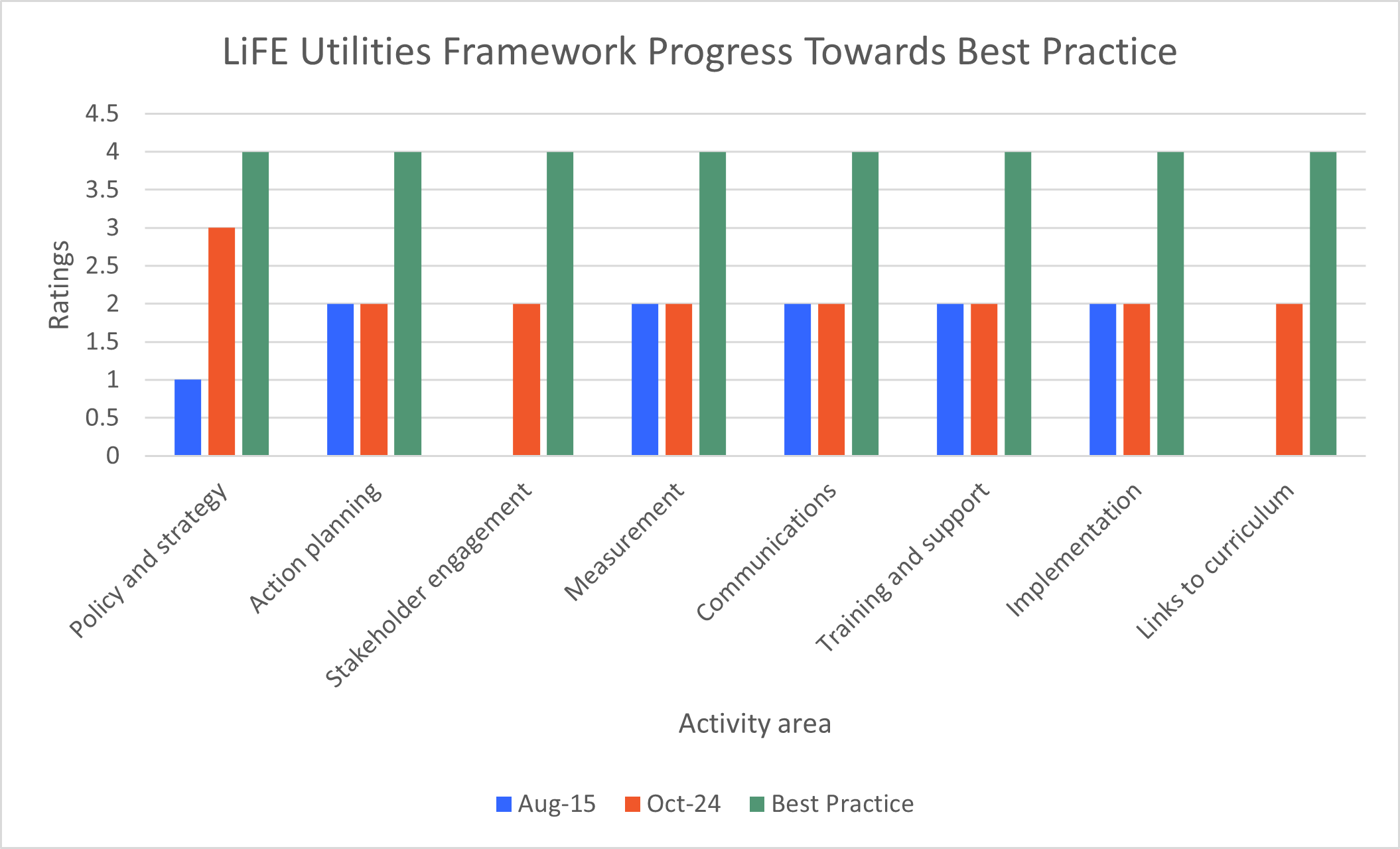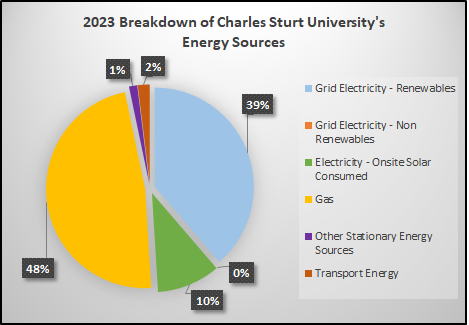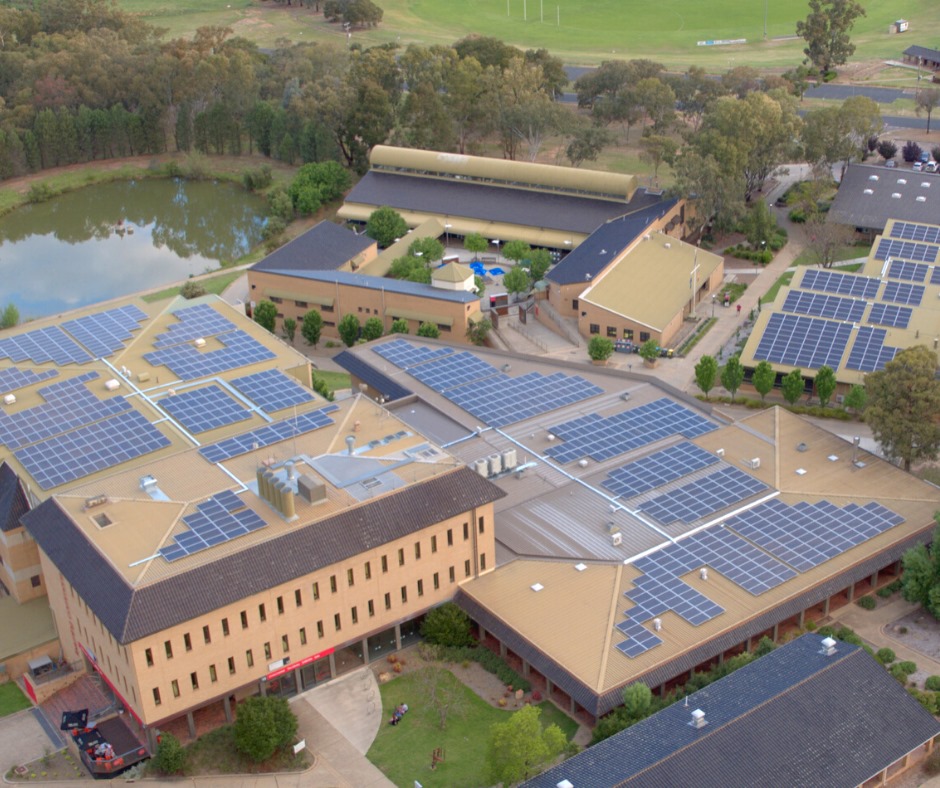Sustainability
- Home
- Locations
- What you can do
- LiFE Framework
- Sustainable Development Goals
- About us
- Grants
- Events
- Contact us
Charles Sturt University has been certified Australia's first Carbon Neutral University. On 28 July 2016, the Australian Government's Carbon Neutral Program certified Charles Sturt University as 'Carbon Neutral' against the National Carbon Offset Standard.
To meet our ongoing energy targets, we will implement a multi-faceted strategy to improve energy efficiency and reduce energy-related carbon intensity. This strategy includes:
State and federal government legislative requirements drive Charles Sturt University and other institutions to use energy wisely and efficiently in our operations.
The National Greenhouse and Energy Reporting Act (2007) requires all facilities and organisations emitting above a certain threshold to report the source of their greenhouse gas emissions and submit figures to the federal government.
Most states have requirements for large energy users to report actions to reduce use and increase efficiencies through to state government agencies.
Charles Sturt University's energy management is intrinsically linked to our carbon management. We address this by focusing on two key areas:
The Energy Framework supports Charles Sturt University's response to these key areas of energy management and achieves:
Read more on Charles Sturt University's carbon neutrality achievement.
The below graph illustrates our progress towards best practice across the eight (8) activity areas. The green bars reaching four (4) highlight best practice and the bars in orange indicate Charles Sturt University's current baseline ratings. An absence of a blue bar indicates 'no progress' for this activity area.

This framework has been placed with Water to form the action plan for Utilities.
There are a number of ways you can help us to save energy:
Charles Sturt University is progressing a strategy to actively reduce its reliance on fossil-fuel based energy sources, with the objective of all stationary and transport energy needs being met through renewable sources. Learn more about our Clean Energy Strategy.
In January 2022, we commenced a new contract for the supply of electricity for our large market sites from 100% renewable energy, linked to Iberdrola Energy Australia’s Bodangora Wind Farm. In January 2023, our small market electricity sites also commenced being sourced from 100% renewables, under the NSW Government’s combined contract.
Charles Sturt closely tracks where the energy it consumes is sourced from. The chart below presents the breakdown of stationary and transport-related energy sources for the 2022 calendar year.

We recognise that onsite generation of renewable energy is an integral component of what we need to do to reduce our carbon footprint and maintain our carbon neutrality. We are focused on reducing energy wastage, improving efficiency, getting off natural gas and lowering emissions through our 2030 Clean Energy Strategy.
We have significant solar installations across our regional campuses:
This has the ability to generate over 5,500,000 kWh per annum. The total solar on-site installations across our campuses will be 4,760kW
This amount of carbon dioxide saved each year is equivalent to:
On-site renewable energy generation is a critical part of the University’s aspirations to source all of its energy needs from renewable sources. We are creating an environment that prepares students to meet current and future challenges. Cadet engineers have been a key part of the team managing these installations.

The Solar photovoltaic (PV) panels have been installed on the rooftops of 17 buildings at our Wagga Wagga campus. At the time of installation, this system was the largest rooftop-mounted solar energy system on a single site, anywhere in Australia. This project will significantly increase the proportion of our energy that is supplied from clean sources and will reduce our carbon footprint.
Specific buildings have been fitted with rooftop-mounted solar panels where the energy generated by these panels will, in the first instance, supply energy demands in the building and then any surplus energy is exported back into the campuses own private high-voltage network. This means that the energy generated by the solar panels can be used by any building on the campus.
This amount of carbon dioxide saved each year is equivalent to:
How do solar panels work on campus? View illustration
An Energy Performance Contract (EPC) helps improve energy and water efficiency across a range of buildings. The energy savings calculated in the contract are guaranteed.
These are the steps involved in the process:
The energy savings opportunities we've included in our EPC are:
See the EPC Poster [PDF 1.2MB]
We have a comprehensive network of sub meters. Over 500 sub meters cover electricity, gas, water and thermal energy (chilled and hot water) across all of our campuses.
The meters help us to measure and monitor where we're using our energy to identify the largest energy users and focus efforts on improving their energy efficiency. We'll also see abnormal trends in energy usage and can investigate why these are occurring.
Charles Sturt University aligns our research, policies, procedures, and other work with the UN Sustainable Development Goals (SDGs). These are the most relevant SDGs for this initiative.